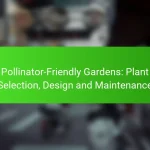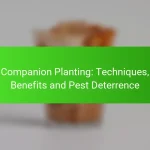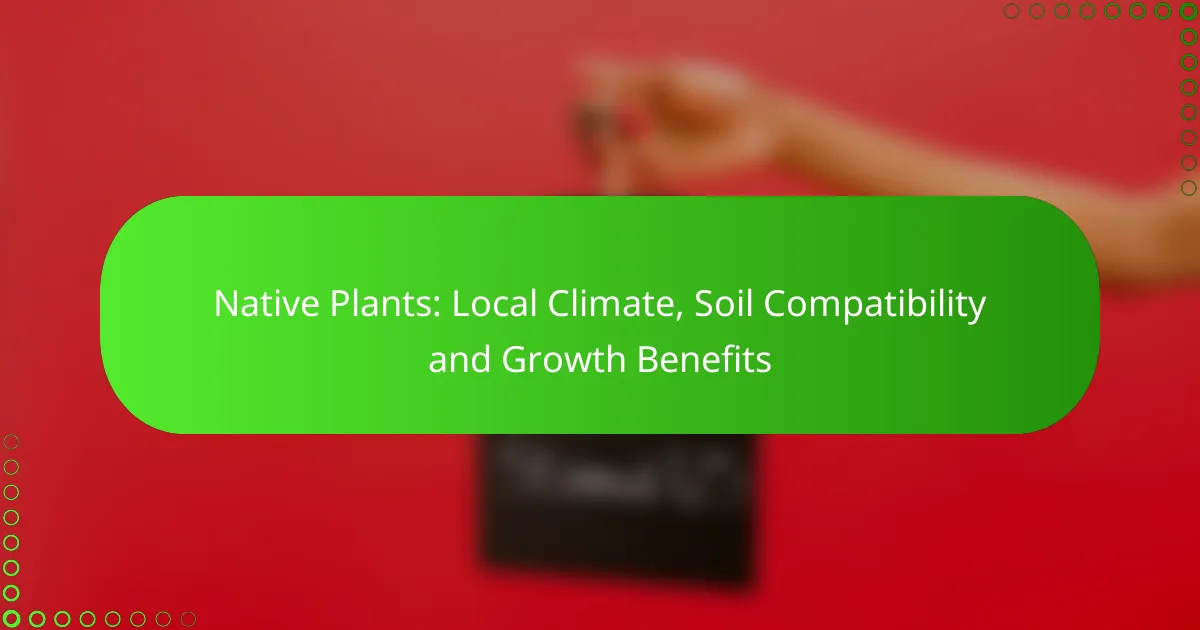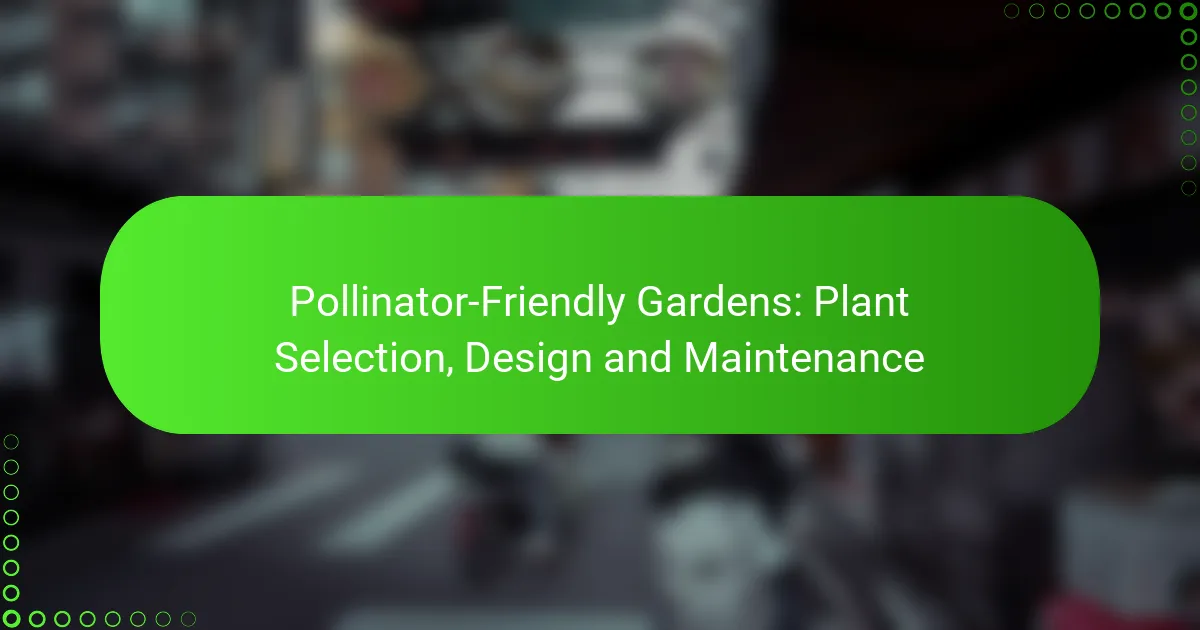Native plants are vital for enhancing local ecosystems, particularly in South Africa, where they support biodiversity and improve soil health. Adapted to the region’s diverse climate and unique soil conditions, these plants offer significant benefits for sustainable gardening and landscaping. By selecting native species that thrive in specific soil types, gardeners can promote healthier environments while enjoying the aesthetic and ecological advantages they provide.

How do native plants benefit local ecosystems in South Africa?
Native plants play a crucial role in enhancing local ecosystems in South Africa by supporting biodiversity, improving soil health, and enhancing water retention. These plants are adapted to the local climate and soil conditions, making them essential for sustainable environmental practices.
Support biodiversity
Native plants are vital for supporting biodiversity as they provide habitat and food for local wildlife, including birds, insects, and mammals. By planting native species, you help maintain the ecological balance and promote the survival of various species that rely on these plants.
In South Africa, diverse ecosystems such as fynbos and savanna are home to unique flora and fauna. Incorporating native plants into gardens and landscapes can create corridors for wildlife, allowing for safe movement and interaction among species.
Improve soil health
Native plants contribute to improved soil health by enhancing soil structure and fertility. Their root systems help prevent erosion and promote the formation of organic matter, which enriches the soil. This natural process supports nutrient cycling and increases soil biodiversity.
For example, deep-rooted native species can break up compacted soil layers, allowing better water infiltration and root growth. This is especially beneficial in areas with poor soil quality, as it can lead to healthier plant communities over time.
Enhance water retention
Native plants enhance water retention in the soil, which is crucial for maintaining healthy ecosystems, especially in regions prone to drought. Their adapted root systems can capture and hold moisture more effectively than non-native species, reducing the need for irrigation.
In South Africa, where water scarcity is a concern, using native plants in landscaping can significantly reduce water usage. Consider planting species like the Cape fynbos, which thrives in low-water conditions while still providing essential ecological functions.

What native plants thrive in South Africa’s climate?
South Africa’s diverse climate supports a variety of native plants, particularly those adapted to its unique ecosystems. Key groups include fynbos species, succulents, and indigenous grasses, each offering distinct benefits for local gardens and landscapes.
Fynbos species
Fynbos species are well-suited to South Africa’s Mediterranean climate, characterized by wet winters and dry summers. These plants, such as proteas and ericas, thrive in nutrient-poor soils and are highly resilient to drought.
When selecting fynbos plants, consider their water requirements and growth habits. Many fynbos species are fire-adapted, meaning they can regenerate after wildfires, making them ideal for sustainable landscaping.
Succulents
Succulents are another excellent choice for South African gardens, especially in arid regions. These plants store water in their leaves, allowing them to survive prolonged dry spells and requiring minimal irrigation.
Popular succulents include aloes and euphorbias, which not only add visual interest but also attract pollinators. When planting succulents, ensure well-draining soil to prevent root rot and consider grouping them by water needs for efficient care.
Indigenous grasses
Indigenous grasses play a crucial role in South Africa’s ecosystems, providing habitat for wildlife and preventing soil erosion. Grasses like Themeda triandra and Eragrostis species are well-adapted to local conditions and can thrive in various soil types.
Incorporating indigenous grasses into your landscape can enhance biodiversity and reduce maintenance needs. They typically require less water than non-native varieties and can be used in naturalistic planting schemes to create a more sustainable garden environment.

How to choose native plants for specific soil types?
Choosing native plants for specific soil types involves understanding the characteristics of the soil and selecting plants that thrive in those conditions. Each soil type has unique properties that affect drainage, nutrient availability, and moisture retention, making it essential to match plants accordingly.
Clay soil compatibility
Clay soil retains moisture and can become compacted, which may hinder root growth. Native plants that thrive in clay soil typically have deep roots and can tolerate wet conditions. Examples include the Swamp Milkweed and Black-Eyed Susan, which can flourish in these heavy soils.
When selecting plants for clay soil, consider their drainage needs. Avoid species that require well-drained conditions, as they may struggle in the dense, moisture-retaining environment of clay. Regularly amending clay soil with organic matter can improve its structure and support a wider variety of native plants.
Sandy soil suitability
Sandy soil drains quickly and tends to be low in nutrients, making it essential to choose plants that can tolerate dry conditions. Native species such as the Beach Strawberry and Sand Verbena are well-suited for sandy soils, as they have adapted to thrive in these less fertile environments.
When planting in sandy soil, ensure that the selected native plants have drought-resistant qualities. Regular watering during dry spells can help establish new plants, but once established, many native species will require minimal maintenance. Consider mulching to retain moisture and suppress weeds.
Loamy soil preferences
Loamy soil is a balanced mix of sand, silt, and clay, providing good drainage and nutrient retention, making it ideal for a wide range of native plants. Species such as the Purple Coneflower and Wild Bergamot thrive in loamy conditions, benefiting from the soil’s fertility and moisture balance.
When choosing plants for loamy soil, take advantage of its versatility by selecting a diverse range of native species. This soil type supports both drought-tolerant and moisture-loving plants, allowing for a rich and varied garden. Regularly incorporating organic matter can enhance soil health and encourage robust growth.

What are the growth requirements for native plants?
Native plants thrive best when their growth requirements are met, including appropriate sunlight, watering, and fertilization. Understanding these needs is crucial for successful cultivation and ensuring the plants’ long-term health.
Sunlight needs
Most native plants require full sun, which typically means at least six hours of direct sunlight each day. However, some species can tolerate partial shade, making it essential to research specific plants before planting.
When selecting a location, observe how sunlight shifts throughout the day and consider seasonal changes. This will help you choose the best spot to maximize exposure and promote healthy growth.
Watering frequency
Native plants generally have lower water requirements compared to non-native species, as they are adapted to local climate conditions. A good rule of thumb is to water deeply but infrequently, allowing the soil to dry out between watering sessions.
During the establishment phase, which can last several weeks, regular watering is necessary. After that, many native plants can thrive on rainfall alone, especially in regions with adequate precipitation.
Fertilization guidelines
Native plants usually require minimal fertilization since they are adapted to local soil conditions. Over-fertilization can lead to excessive growth and reduce the plants’ resilience to pests and diseases.
If fertilization is necessary, use organic options or slow-release fertilizers. A light application in early spring can support growth, but always follow the specific needs of the plant species you are cultivating.

How do native plants reduce maintenance costs?
Native plants significantly lower maintenance costs by requiring less water, reducing pest management needs, and minimizing fertilization. These benefits stem from their natural adaptation to local climates and soils, leading to healthier ecosystems and lower long-term expenses for homeowners and landscapers.
Lower water usage
Native plants are well-suited to local climates, often requiring less water than non-native species. This efficiency can lead to substantial savings on water bills, especially in regions prone to drought. For example, choosing native grasses over traditional lawns can reduce irrigation needs by up to 50%.
Reduced pest management
Native plants attract beneficial insects and pollinators, which can help control pest populations naturally. This reduces the need for chemical pesticides, saving money and promoting a healthier environment. By creating a balanced ecosystem, native plants can lower pest-related maintenance by a significant margin.
Minimal fertilization needs
Many native plants thrive in local soils without the need for additional fertilizers. Their deep root systems and natural resilience allow them to absorb nutrients efficiently, which can cut fertilization costs by a considerable percentage. Homeowners can often maintain a vibrant landscape with minimal or no synthetic fertilizers, promoting sustainability and cost-effectiveness.

What are the best practices for planting native species?
Best practices for planting native species include selecting the right time for planting, ensuring proper spacing, and preparing the soil adequately. These steps help native plants thrive in their local environment, promoting biodiversity and reducing maintenance needs.
Timing for planting
The best time to plant native species typically aligns with the local climate and seasonal patterns. In many regions, early spring or fall is ideal, as temperatures are moderate and rainfall is more consistent, aiding root establishment.
Consider local frost dates and soil temperature when planning your planting schedule. For instance, in temperate areas, aim for planting after the last frost in spring or before the first frost in fall to maximize growth potential.
Spacing considerations
Proper spacing between plants is crucial for their growth and health. Native species often require specific distances to ensure adequate sunlight, air circulation, and nutrient access. A general rule is to space plants according to their mature size, typically ranging from 30 cm to over a meter apart, depending on the species.
When planning your layout, consider the growth habits of the plants. Taller species should be placed at the back of a garden bed, while shorter ones can be positioned in front to prevent shading. This arrangement not only enhances aesthetics but also promotes healthy growth.










